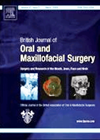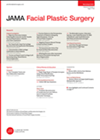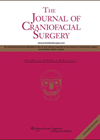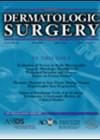
Journal Reviews archive for August 2014
Changing trends in the management of osteoradionecrosis (ORN)
In the wake of new drugs that have been introduced for ORN like pentoxifylline, tocopherol, clodronate etc, traditional ‘conservative’ management of osteoradionecrosis (ORN) including minimal surgical debridement and hyperbaric oxygen therapy (HBOT) is under review. This study is a retrospective...
Is it time for cone-beam CTs to replace the traditional orthopantomogram in the primary diagnosis of temporomandibular joint disorders?
Cone-beam computed tomographic (CT) requires a lower dose of radiation compared to the multidetector CT and provides much more detailed information in 3D about the bony structures of the temporomandibular joint (TMJ) when compared to the traditional OPG. In this...
Role of copper ions in drinking water in the pathogenesis of oral submucous fibrosis: the missing link in the aetiopathology?
Often a breakthrough link in the understanding of the aetiopathogenesis of a hitherto common pathology that has been evading the medical community may not come from the hi-tech labs of the developed world but from the intelligent investigations from a...
Subcutaneous botox
The authors of this paper performed a double blind, randomised, prospective trial on 19 patients receiving intramuscular botulinum toxin injections on one side of the forehead and subcutaneous injections on the other. Objective assessment of brow elevation and subjective self-evaluation...
Loosen up
Lower eyelid retraction is a complex eyelid malposition with varied causes and anatomic features that make correction of eyelid position challenging. This original study presents a new surgical concept for correction of lower eyelid retraction in a particular patient population:...
Simplification measure for costal cartilage grafting
The scalpel is currently the instrument used by most surgeons for carving costal cartilage grafts. However, this method is time consuming, requires a high degree of skill, and is far from ideal for reproducibly attaining uniform slices, even in expert...
The supraclavicular artery flap for head and neck reconstruction
Free tissue transfer has been manifested to be the primary reconstructive tool for major ablative defects of the head and neck. However, many patients are not good candidates for free tissue transfer because of their medical comorbidities or lack of...
Traumatic split earlobe repair using double triangular skin flaps
Split earlobes are a common secondary deformity of the ear. Numerous techniques have been described to repair a traumatic split earlobe and break the linear scar. However, most of the techniques require elevation of additional flaps from normal surrounding tissue...
Repair of the supernumerary nostril
The supernumerary nostril is a rare challenge, first reported by Lindsay in 1906. It has been suggested that they may develop from an accessory nasal pit or from a fissure in the lateral nasal process to create a double nostril....
A conservative approach to treat ameloblastoma
Ameloblastoma is a relatively rare odontogenic tumour that is benign but locally aggressive. Additionally they tend to recur locally. These are rare accounting for 1% of oral tumours and occur almost exclusively in the jaws. It is more common in...
Reconstruction after parotid surgery
This is a retrospective study from Naples, Italy. The authors analyse and compare patients that had benign parotid disease that were reconstructed with three different techniques. Between February 2002 and March 2009, 224 patients were included; these patients had either...
Stretch mark treatment comparison
This article shows a comparison between two simple methods of treatment which are currently widely used in the aesthetics industry to treat early striae distensae. With the increasing demand from patients to achieve an improvement in stretch marks, the drive...







